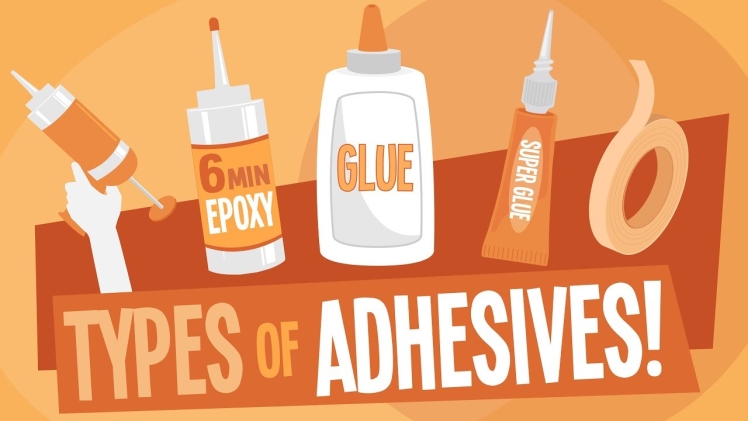Glue is a substance or mixture, as well as multi-component compositions based on organic or inorganic substances, capable of joining (gluing) various materials – in particular, wood, leather, paper, fabrics, glass, ceramics, metal, plastics, rubber. Bonding is due to the formation of a strong adhesive bond between the adhesive layer and the materials of the surfaces to be joined. The strength of the glue line is also influenced by the cohesion of the glue to the surface.
Liquid Adhesives:
- The widest group of adhesives, including:
– universal adhesives – adhesives for plastic
– wood adhesives – paper adhesives.
- There are two options:
– with solvent
– without solvent (base – water).
- Bonding method:
– “wet gluing” or gluing with one-sided glue application.
– glue is applied only to one of the glued surfaces, which immediately connects to the second. With this method of gluing, it is desirable that one of the surfaces is porous.
Solvent Adhesive:
Adhesives contain resin or rubber that has been diluted with a solvent such as alcohol, acetone, or methyl acetate. During the bonding process, the solvent begins to evaporate, causing the adhesive to harden, therefore the materials to be bonded must allow the solvent to penetrate the pores.
For impervious, sealed materials, the surface should be as long and narrow as possible so that the solvent can evaporate at the edges. When gluing them, apply glue to both surfaces and let it dry, then apply a thin layer of glue to one of the glued surfaces again and press the surfaces together, let the glue joint dry.
Important: Many plastics are damaged or even melted by solvent-based glue. When gluing plastic surfaces, always read the instructions on the packaging.
Contact Adhesives:
Unlike liquid adhesives, they are suitable for gluing sealed materials through which the solvent does not evaporate. Contact adhesives provide fast and strong adhesion to most surfaces. They do not lose their elastic properties after hardening, therefore they are especially convenient for gluing materials that, after joining, must remain mobile (shoe soles, leather belts). In the form of a spray, contact adhesives are indispensable for gluing large areas (for example, for cladding furniture).
Contact Adhesive Application
Apply a thin layer of glue to both bonding surfaces. On highly absorbent materials (leather, fabric), apply the sealant in several layers to form a thin film. Do not connect parts at once. Allow the glue to dry for 10-15 minutes until it is no longer sticky to the touch. Gently join the surfaces to be glued and squeeze them firmly for a while.
Important: The strength is important, not the duration of the compression. If everything is done correctly, the parts will no longer be disconnected.
Reaction Adhesives
Reactive adhesives are adhesives that harden through a chemical, physical or catalytic reaction. Depending on the type of reaction, adhesives can be one- or two-component.
One-Component Adhesives
One-part adhesives are an inactive hardener that remains inert in the package under normal conditions. The reaction begins only when the hardener comes into contact with the second reaction component, which, depending on the type of glue, can be air humidity, UV radiation or oxygen (aerobic adhesives) or, conversely, the absence of air, for example, adhesives containing metal ions (anaerobic adhesives).
Two-Component Adhesives
They are a binder and a hardener. These two components are in different packages and, depending on the type of glue, can be liquid, pasty, or free-flowing. When mixed, the components react to form an adhesive mixture, which must be used as quickly as possible, since these are the only adhesives with a short working period (they begin to harden immediately).

